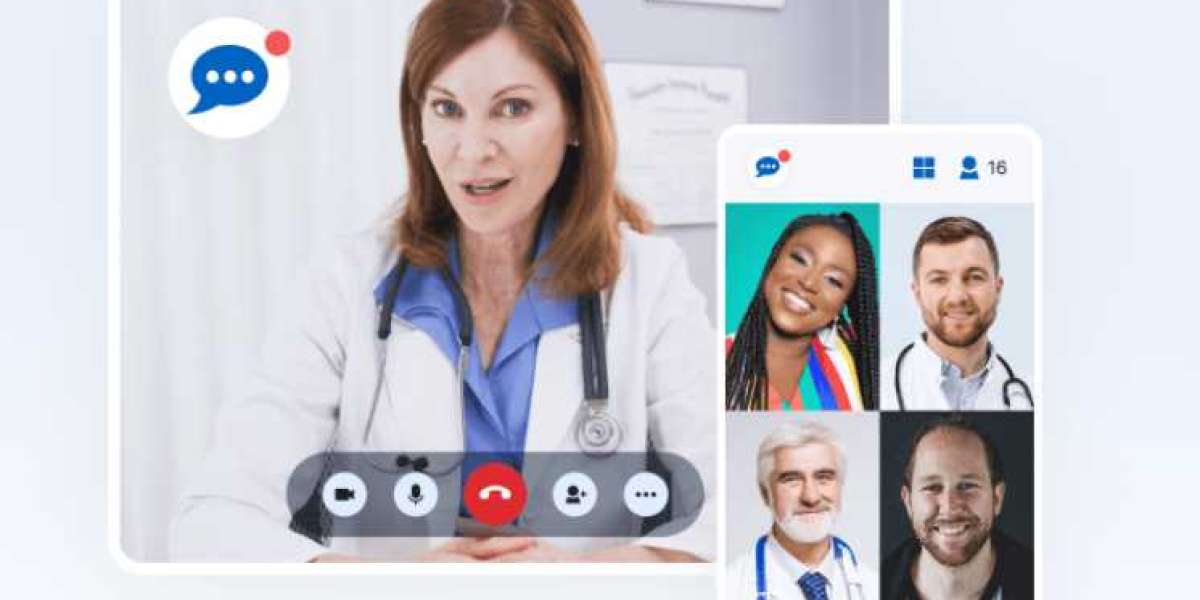In recent years, telehealth has revolutionized the way healthcare is delivered, providing patients with convenient access to medical professionals while overcoming geographical barriers. As a result, the demand for telehealth software development has surged. Developing effective telehealth software requires a thorough understanding of healthcare needs, technology trends, regulatory requirements, and user experience. This article serves as a comprehensive guide to getting started with telehealth software development, outlining the key steps, considerations, and best practices.
Understanding Telehealth
Telehealth encompasses a variety of technologies and methods that enable healthcare providers to deliver care remotely. This includes:
- Telemedicine: Virtual consultations and diagnosis through video conferencing.
- Remote Patient Monitoring (RPM): Collecting patient data through wearable devices or apps.
- Mobile Health (mHealth): Health-related services and information delivered via mobile devices.
- Health Information Exchange (HIE): The sharing of patient information between different healthcare organizations.
Telehealth software solutions can vary widely, from simple video conferencing tools to comprehensive platforms that integrate electronic health records (EHR), billing systems, and more.
Step 1: Define Your Goals and Target Audience
Identify the Purpose of Your Software
Before diving into development, clearly define the objectives of your telehealth software. Common goals include:
- Improving patient access to healthcare services.
- Reducing wait times and improving efficiency for healthcare providers.
- Enhancing patient engagement and satisfaction.
- Supporting remote monitoring of chronic conditions.
Understand Your Target Audience
Identifying your target audience is crucial for developing effective telehealth solutions. Your audience may include:
- Patients: Individuals seeking medical advice, consultations, or monitoring.
- Healthcare Providers: Doctors, nurses, and specialists looking to deliver care remotely.
- Healthcare Organizations: Hospitals and clinics aiming to integrate telehealth services.
By understanding the needs, preferences, and challenges of your target audience, you can tailor your software to address their specific requirements.
Step 2: Conduct Market Research
Analyze Competitors
Research existing telehealth solutions in the market. Identify their strengths and weaknesses, features, pricing models, and user feedback. This analysis can help you identify gaps in the market and potential opportunities for your software.
Gather User Feedback
Conduct surveys or focus groups with potential users to gather insights on their preferences and pain points. Understanding their experiences with existing telehealth solutions can inform your development process and help you create a more user-centric product.
Step 3: Comply with Regulatory Standards
Telehealth software development is subject to various regulations and compliance standards, which vary by country and region. In the United States, for example, key regulations include:
- Health Insurance Portability and Accountability Act (HIPAA): Ensures patient privacy and data security.
- Telemedicine Licensure: Requirements for healthcare providers to be licensed in the states where they provide care.
- FDA Regulations: If your software includes medical devices or software intended for medical purposes, it may fall under FDA regulations.
Understanding and adhering to these regulations is critical for ensuring the safety, security, and legality of your telehealth software.
Step 4: Choose the Right Technology Stack
Frontend Development
The frontend of your telehealth software is what users will interact with. It should be intuitive, responsive, and visually appealing. Common technologies for frontend development include:
- HTML/CSS: For structuring and styling web pages.
- JavaScript Frameworks: Such as React, Angular, or Vue.js for creating dynamic user interfaces.
Backend Development
The backend handles data processing, storage, and communication with databases and external services. Popular backend technologies include:
- Node.js: A JavaScript runtime for building scalable network applications.
- Python: Known for its simplicity and versatility, often used with frameworks like Django or Flask.
- Ruby on Rails: A framework that allows for rapid development of web applications.
Database Management
Choosing the right database is crucial for storing patient data, appointment schedules, and other relevant information. Options include:
- Relational Databases: Such as PostgreSQL or MySQL for structured data.
- NoSQL Databases: Like MongoDB for unstructured or semi-structured data.
Communication Technologies
Implementing reliable communication tools is essential for telehealth software. Consider options such as:
- WebRTC: An open-source project that enables real-time communication through web browsers.
- Twilio: A cloud communications platform that provides APIs for SMS, voice, and video capabilities.
Step 5: Design User Experience (UX) and User Interface (UI)
Focus on User-Centric Design
A well-designed UX/UI is crucial for ensuring that users can easily navigate your telehealth software. Consider the following:
- Intuitive Navigation: Ensure users can easily find what they need, whether it's scheduling appointments, accessing medical records, or contacting healthcare providers.
- Mobile Responsiveness: With the rise of mobile device usage, your software should provide a seamless experience across different screen sizes.
- Accessibility: Implement accessibility features to accommodate users with disabilities, such as text-to-speech capabilities and keyboard navigation.
Create Wireframes and Prototypes
Before full-scale development, create wireframes and prototypes to visualize the layout and functionality of your software. This allows you to gather feedback from potential users and make necessary adjustments before finalizing the design.
Step 6: Develop the Software
Agile Development Methodology
Consider adopting an Agile development approach, which promotes iterative progress through sprints. This allows for flexibility, regular feedback, and continuous improvement throughout the development process.
Implement Key Features
Incorporate essential features that meet the needs of your target audience. Common features in telehealth software include:
- Video Conferencing: Secure, high-quality video and audio for virtual consultations.
- Appointment Scheduling: A user-friendly interface for booking and managing appointments.
- Patient Portal: A secure platform for patients to access their medical records, test results, and communication with healthcare providers.
- Billing and Insurance Integration: Tools for handling payments and insurance claims efficiently.
- Prescription Management: Features for electronic prescribing and medication tracking.
Step 7: Test the Software
Conduct Thorough Testing
Before launching your telehealth software, conduct comprehensive testing to identify and fix any bugs or issues. Key testing methods include:
- Functional Testing: Ensure that all features work as intended.
- Usability Testing: Gather user feedback to assess the overall experience and identify areas for improvement.
- Security Testing: Verify that your software complies with security standards, especially regarding patient data protection.
Gather Feedback
Consider a beta testing phase where a select group of users can test your software. Their feedback can provide valuable insights for further refinement.
Step 8: Launch and Market Your Software
Develop a Launch Strategy
Create a marketing plan that outlines how you will promote your telehealth software. Consider strategies such as:
- Content Marketing: Publish blog posts, case studies, and whitepapers highlighting the benefits and features of your software.
- Social Media Marketing: Utilize social media platforms to engage with potential users and promote your software.
- Webinars and Demos: Host online demonstrations to showcase your software's capabilities to potential customers.
Monitor and Support
After launching, continuously monitor user feedback and software performance. Be prepared to provide ongoing support to users and make necessary updates or improvements based on their needs.
Step 9: Maintain and Update the Software
Regular Updates
Telehealth software requires ongoing maintenance and updates to ensure optimal performance and security. Regularly update your software to incorporate new features, address bugs, and comply with changing regulations.
Gather User Feedback
Continuously solicit feedback from users to identify areas for improvement and to understand their evolving needs. Implementing user suggestions can enhance the overall experience and increase user retention.
Conclusion
custom telehealth software development is a complex but rewarding endeavor that can significantly improve healthcare delivery. By following this step-by-step guide, you can navigate the challenges of developing telehealth software and create a solution that meets the needs of patients and healthcare providers alike. Remember, the key to success lies in understanding your audience, complying with regulations, and continuously iterating based on user feedback. With the right approach, your telehealth software can make a meaningful impact on the healthcare industry and contribute to better patient outcomes.








